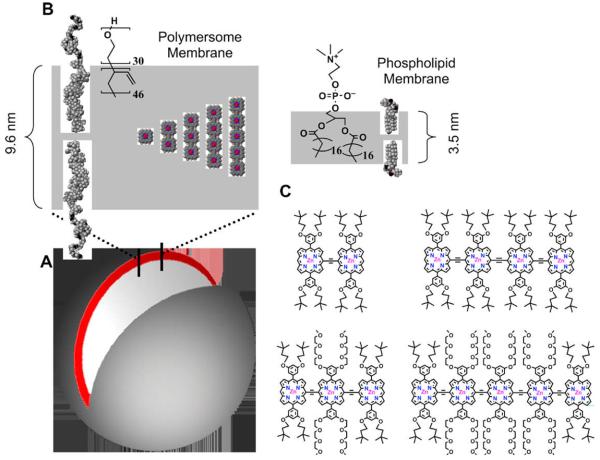Fig. 1.
Schematic representations of NIR-emissive polymersomes. (A) In aqueous solution, amphiphilic diblock copolymers of polyethyleneoxide-1,2 polybutadiene (PEO30–PBD46) self-assemble into polymer vesicles (polymersomes) with the hydrophobic PBD tails orienting end-to-end to form bilayer membranes. The depicted unilamellar polymersome displays an excised cross-sectional slice illustrating the bilayer PBD membrane (gray) containing the hydrophobic (porphinato)zinc(II) (PZn)-based near-IR fluorophores (NIRFs, red). (B) CAChe-generated sectional schematic of the NIR-emissive polymersome membrane indicating the molecular dimensions of: (i) the PBD component of the bilayer (9.6 nm); (ii) the large, dispersed PZn-based NIRFs (2.1–5.4 nm); and, (iii) a typical liposome membrane (3–4 nm) comprised of phospholipids (1-stearoyl-2-oleoyl-sn-Glycero-3-Phosopho-choline—SOPC). (C) Chemical structures of NIR fluorophores PZn2–PZn5. [This image was reproduced from Ghoroghchian et al. [9] with permission from Copyright (2005) National Academy of Sciences, USA.]

